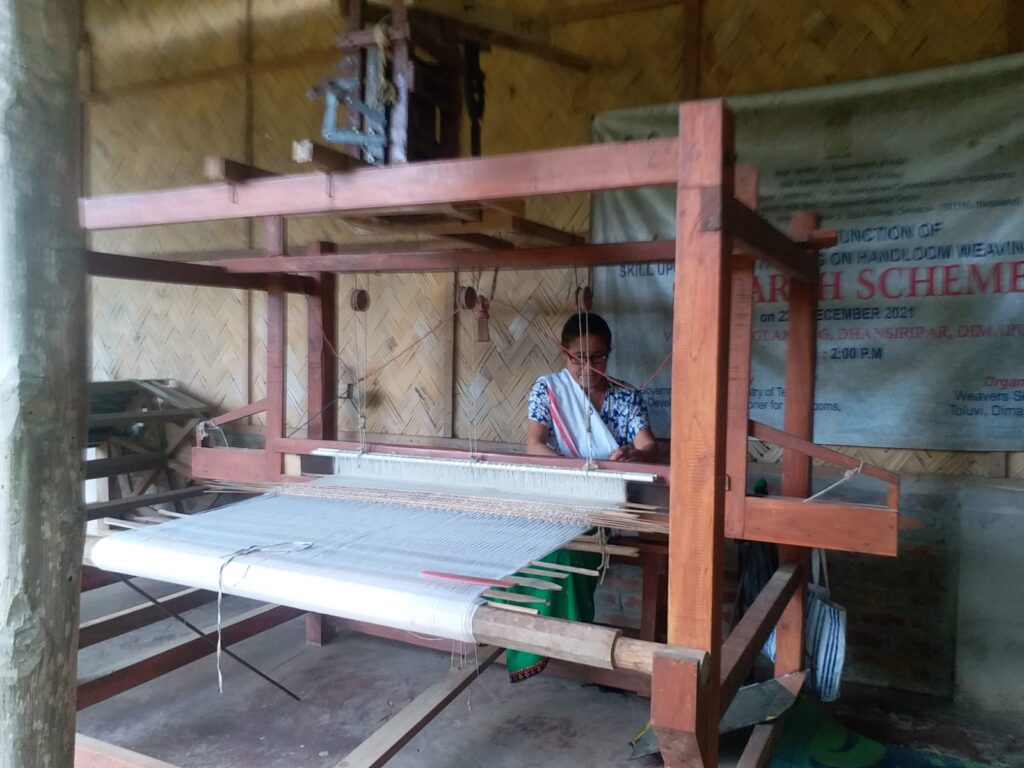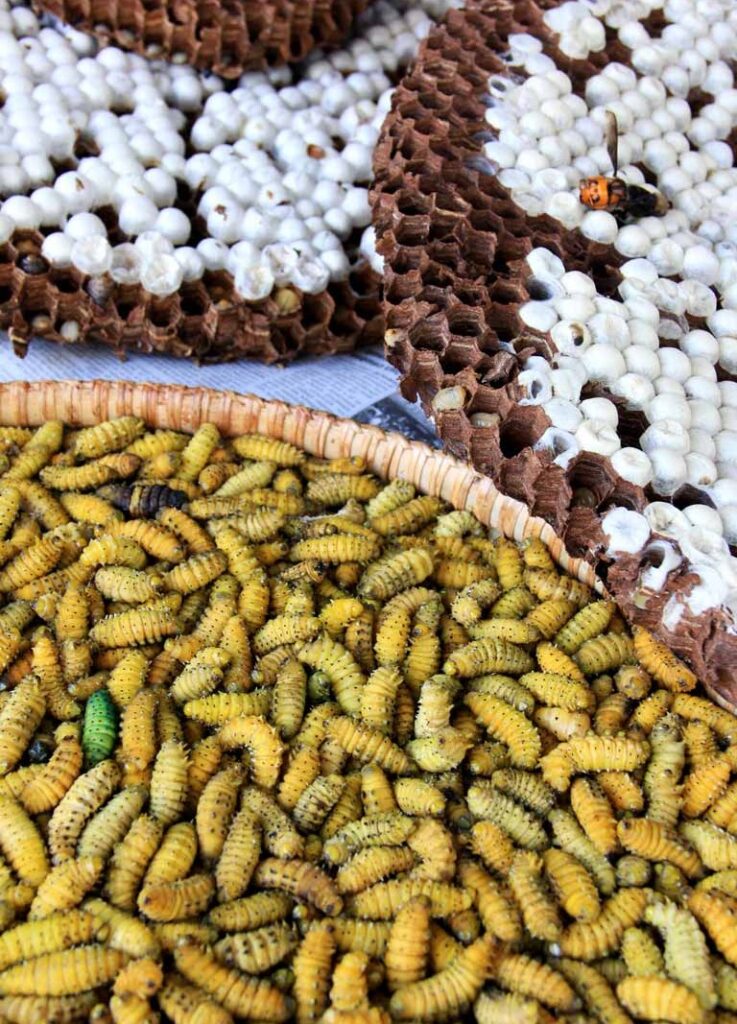
For Eri Silk Mulberry Leaves are not used for feeding the silk worms
Let’s dive deeper into the world of sericulture and Nagasilk.
Sericulture, the practice of cultivating silkworms for silk production, has a rich history dating back over 5,000 years to ancient China. The process involves:
- Breeding and hatching silkworm eggs
- Feeding the larvae a diet of mulberry leaves
- Harvesting the cocoons
- Soaking and cleaning the cocoons
- Unwinding the silk filaments from the cocoons
In the case of Nagasilk, the silkworms are allowed to emerge from their cocoons before harvesting, making it a more time-consuming and labor-intensive process.
Nagasilk has a unique texture and sheen due to the silkworms’ natural emergence process. The silk is often woven into exquisite fabrics, scarves, and garments that are highly valued for their beauty and durability.
The cultural significance of Nagasilk is deeply rooted in the traditions of the Naga tribe, who believe that the silk represents their ancestral heritage and spiritual connection to the natural world
Exploring the Science of Eri Silk Production
Source of Eri Silk
Eri silk comes from the cocoons of the Samia Cynthia Ricini or Philosamia Ricini moths, primarily found in Northeast India. These moths are unique to this region, contributing to the distinct characteristics of Eri silk. Unlike other silks, Eri silk production is deeply rooted in the culture and practices of local communities.
Unique Properties
Eri silk is known for its staple fiber, which is coarse and dense, providing excellent thermal properties and breathability. This makes Eri silk ideal for various climate conditions, offering comfort and warmth. Its unique texture and properties differentiate it from other types of silk, making it highly valued.
Production Process
The production process of Eri silk is typically small-scale, carried out in village homes, ensuring a low carbon footprint. Silkworms feed on castor leaves and other plants, and the cocoons are harvested after the moths emerge, allowing for a sustainable and ethical silk production method. The degumming process involves boiling the cocoons to remove the gummy substance, followed by stretching and drying.
Comparison to Other Silks
Eri silk stands apart from Mulberry silk in several aspects, including the type of moth, food, cocoons, and usage. While Mulberry silk comes from the Bombyx mori moth, which feeds on mulberry leaves, Eri silk’s distinct characteristics arise from its unique source and production methods. This comparison highlights Eri silk’s special qualities and its significant role in traditional and contemporary textiles.
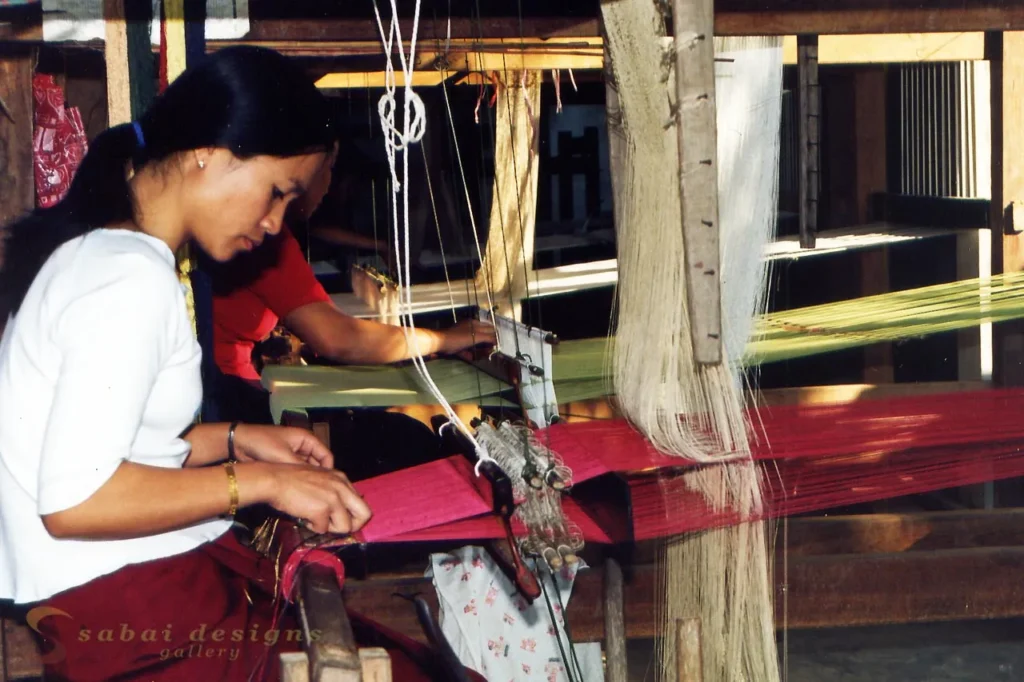
Exploring Naga Silk and Sericulture: Beyond Tradition and Sustainability
Sericulture, the practice of silk farming, spread from China to India, Japan, and other parts of Asia over thousands of years. Nagasilk, a product of this ancient tradition, has been an integral part of the Naga tribe’s culture for centuries.. However, the production of Nagasilk is limited due to the labor-intensive process and the specific climate required for the silkworms, with India, Japan, and China being the main producers.
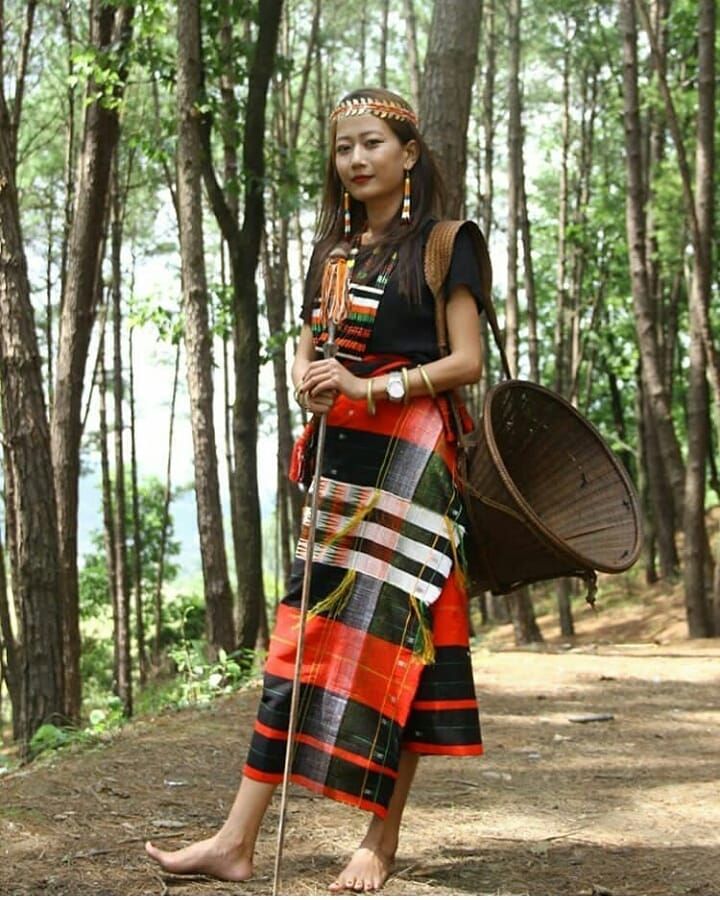
Significance and Applications of NagaSilk
Nagasilk is highly valued in high-end fashion, textiles, and crafts for its rarity and distinctive qualities. Efforts to preserve traditional sericulture practices and protect the Nagasilk heritage include training programs for young artisans and sustainable production methods. Nagasilk holds deep spiritual significance for the Naga people, symbolizing their connection to nature, their ancestors, and their cultural identity.
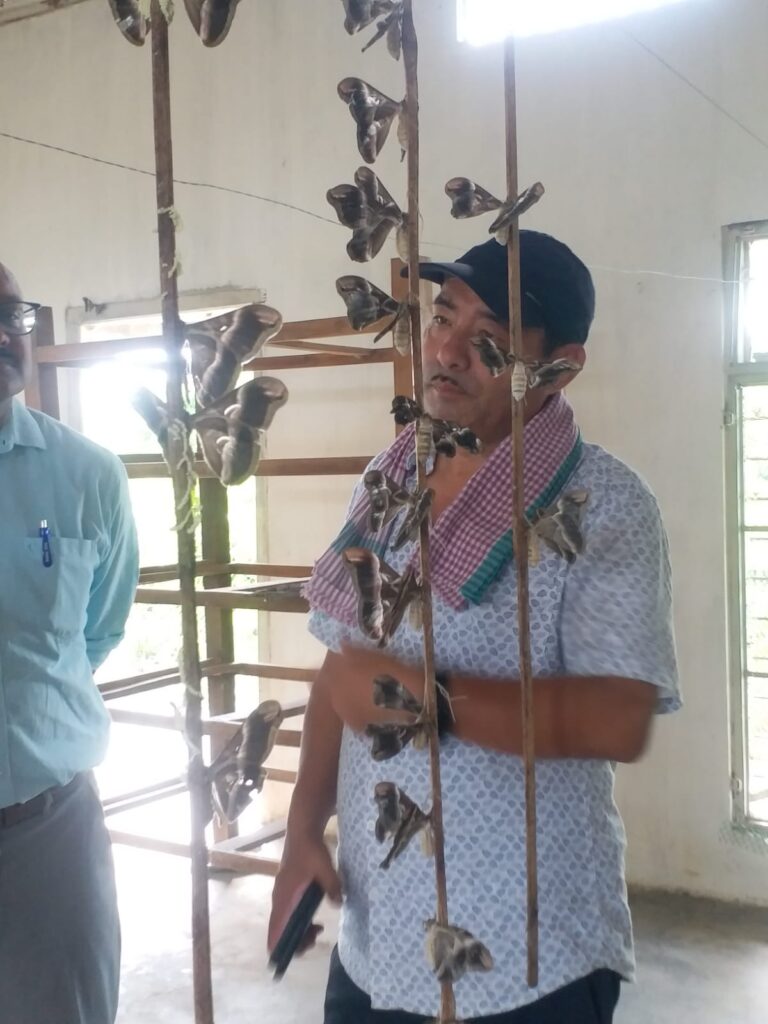
The process of harvesting eri silk involves the following steps:
- Cocoon collection: Eri silkworms are allowed to emerge from their cocoons naturally, making it a non-violent and sustainable process.
- Sorting and cleaning: Cocoons are sorted and cleaned to remove any debris or damaged cocoons.
- Soaking: Cocoons are soaked in water to loosen the sericin, a gummy substance holding the cocoon together.
- Degumming: Cocoons are boiled or steamed to remove the sericin, making it easier to unwind the silk filaments.
- Reeling: The degummed cocoons are then unwound onto reels, creating a single thread of eri silk.
- Spinning: The threads are spun together to create the desired thickness and texture of yarn.
- Weaving or knitting: The yarn is then woven or knitted into fabric, scarves, or other textiles.
NagaSilk: Modern Fashion and Design Inspirations.
Nagasilk has found its place in high-end and couture fashion design, captivating designers and fashion enthusiasts alike. The intricate patterns and rich history embedded in Nagasilk have become a source of inspiration for creative design ventures, bringing a touch of tradition into contemporary fashion.
In the fast-growing fashion industry, Nagasilk is carving out a niche segment for eccentric and unique designs. Elements and principles of design reminiscent of Naga tribal dresses and ornaments are making their way into fashion shows, blending tradition with modern aesthetics.

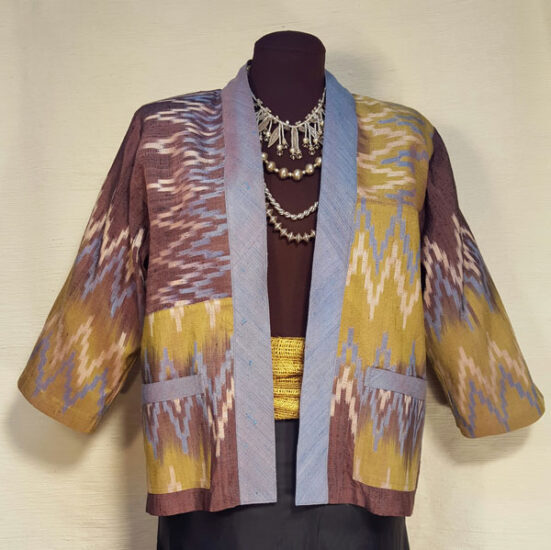
This fusion of tradition and modernity has also inspired various fashion designers and brands. Nagasilk’s versatility and cultural depth provide a rich source of inspiration for new products and design ideas. As a result, it continues to influence the fashion industry, encouraging designers to explore and incorporate the timeless elegance and heritage of Nagasilk into their collections.
“Preserving Tradition, Empowering Communities: Nagasilk – Where Eri Silk Weaves a Sustainable Future”

Nagasilk.com
PEACE OF ERI SILK
www.nagasilk.com


